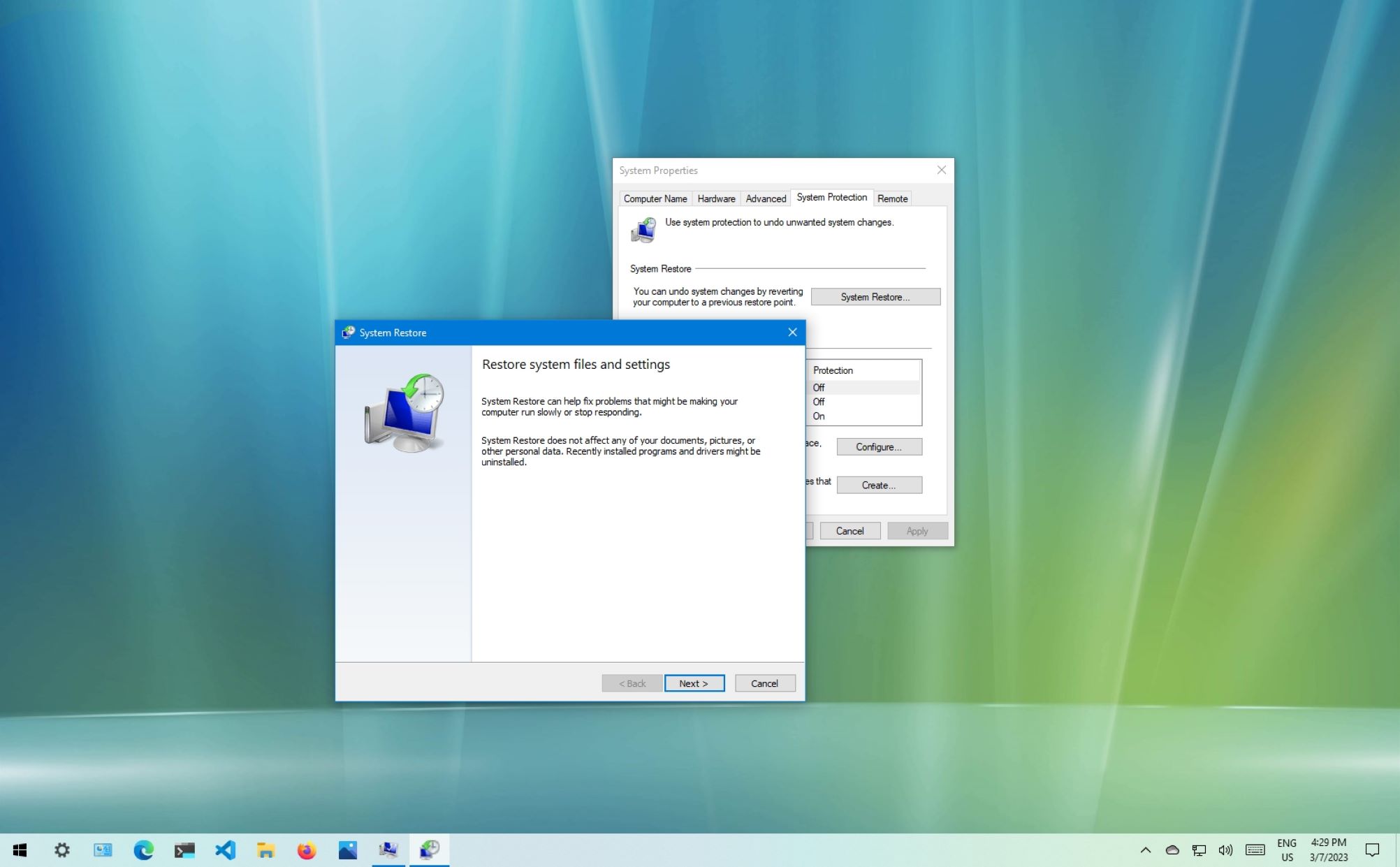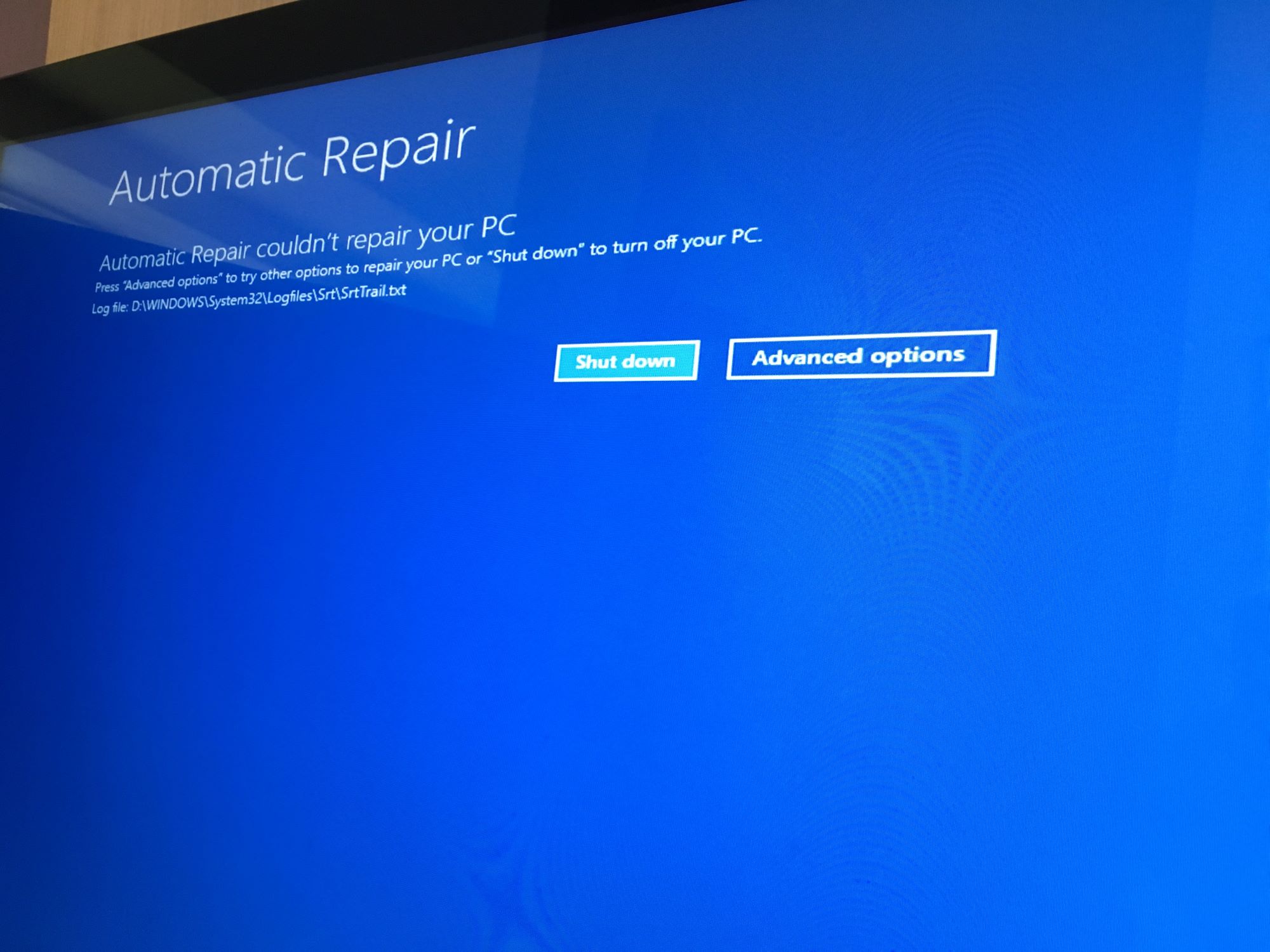Introduction
Welcome to our guide on how long a system restore takes in Windows 10. System restore is a powerful feature that allows you to roll back your computer’s settings to a previous point in time, ultimately solving various software issues. Whether you’re experiencing crashes, errors, or malware infections, performing a system restore can often be the solution.
However, one concern that many users have is how long the system restore process will take. The duration can vary depending on several factors, including the size of your hard drive, the amount of data being restored, and the overall performance of your computer. In this article, we will provide you with insights into the factors that affect system restore time, typical durations, and tips to speed up the process.
Understanding how long a system restore takes is essential, as it allows you to plan accordingly and estimate the downtime of your computer. Whether you need to restore your system to a previous state or simply want to learn more about the process, this guide will help you navigate through the intricacies of system restore times in Windows 10.
What is System Restore?
Before diving into the details of how long a system restore takes, let’s first understand what system restore is and how it works. System restore is a built-in feature in Windows operating systems that allows you to create restore points, which are essentially snapshots of your computer’s settings and system files at a specific point in time.
These restore points serve as a safety net for your computer, providing a way to revert to a previous state should any issues or errors arise. When you perform a system restore, your computer will be rolled back to the state captured at the restore point, effectively undoing any changes that may have caused problems.
System restore primarily focuses on system files, registry settings, and program installations rather than personal files or documents. It is worth noting that system restore does not affect or delete your personal files, such as photos, documents, or videos. It primarily restores system-related settings, which can help resolve software conflicts, driver issues, or other software-related problems.
To initiate a system restore in Windows 10, you can access the System Restore tool by searching for “System Restore” in the Start menu. From there, you can choose a specific restore point or let Windows select the most recent one. It is advisable to create restore points manually before making any significant changes to your system, such as installing new software or making system configuration adjustments.
Now that we have a clear understanding of what system restore is, let’s explore the factors that can influence how long a system restore takes.
Factors that Affect System Restore Time
When it comes to determining how long a system restore takes in Windows 10, several factors come into play. Understanding these factors can help you estimate the time required for the process and manage your expectations accordingly. Here are the key factors that can affect system restore time:
1. Size of the Restore Point: The size of the restore point plays a crucial role in the duration of the system restore process. If you have a large number of programs installed or significant changes to system files, the restore point’s size will be larger, resulting in a longer restore time.
2. System Specifications: The performance and specifications of your computer can impact the system restore time. A computer with a faster processor, more RAM, and a solid-state drive (SSD) will generally perform the restore process quicker compared to a slower system with less RAM and a traditional hard drive (HDD).
3. Amount of Data Being Restored: If you have a considerable amount of data to be restored, such as a large number of files or folders, it can prolong the system restore process. The more data there is to recover, the longer it will take for the process to complete.
4. System Activity: The level of activity on your computer during the restore process can impact the time it takes. If you have resource-intensive programs running in the background or multiple applications open, it can delay the restoration process as the system resources are being utilized by other tasks.
5. Hard Drive Speed: The speed of your computer’s hard drive also plays a role in system restore time. An SSD typically provides faster read and write speeds compared to a traditional HDD, resulting in a quicker restore process.
6. System Restore Options: Windows provides different options for system restore, such as restoring only system files or restoring both system files and previous versions of personal files. Choosing the option that includes personal files can lengthen the restore time, as it involves restoring a larger amount of data.
By understanding these factors, you can get a better idea of how long a system restore may take on your Windows 10 computer. In the next section, we will explore the typical timeframes for system restoration.
Typical Time Required for System Restore
The time it takes to complete a system restore in Windows 10 can vary based on various factors as mentioned earlier. However, it is helpful to have a general understanding of the typical timeframes you can expect for the system restoration process. Keep in mind that these are just estimates, and actual times may vary.
For smaller restore points with minimal changes to system files and settings, the system restore process can complete within 15 to 30 minutes. This relatively quick timeframe is achievable when the restore point is small, and there are minimal files to be restored.
On the other hand, larger restore points involving significant changes to system files and settings can take up to an hour or longer. If you have a considerable amount of data to be restored or your computer’s performance is relatively slower, the process may take more time to complete.
It is important to note that during the system restore process, your computer may reboot multiple times. Each reboot is a normal part of the process as Windows applies the changes and restores the system files and settings to the selected restore point.
Additionally, it is worth mentioning that the time required for system restore also depends on the system’s overall performance and capabilities. A more powerful computer with faster hardware components, such as a solid-state drive (SSD) and sufficient RAM, can significantly reduce the time required for system restoration.
While these are general timeframes, it is crucial to be patient during the system restore process. Avoid interrupting the process or prematurely canceling it, as it can lead to system instability or incomplete restoration.
Now that you have an idea of the typical timeframes for system restore, let’s explore some tips that can help speed up the system restore process.
Tips to Speed Up System Restore
If you’re looking to speed up the system restore process in Windows 10, there are several tips and tricks that can help expedite the restoration and get your computer up and running again. Here are some effective strategies to speed up system restore:
1. Close Unnecessary Programs: Before initiating a system restore, close all unnecessary programs and applications running in the background. This will free up system resources and ensure that the restore process receives maximum processing power, resulting in quicker restoration.
2. Disable Antivirus Software: Temporarily disabling your antivirus software during the system restore can help speed up the process. Antivirus programs can sometimes interfere with the restore process, causing delays. Make sure to re-enable your antivirus software once the restoration is complete.
3. Clean Up Your Hard Drive: Perform a disk cleanup on your computer to remove unnecessary files and temporary data. This will not only free up valuable disk space but also help streamline the restore process by reducing the amount of data that needs to be restored.
4. Use an SSD: If your computer doesn’t have a solid-state drive (SSD), consider upgrading to one. SSDs offer significantly faster read and write speeds compared to traditional hard drives (HDDs), which can greatly improve the overall restore time.
5. Create Regular Restore Points: Regularly creating restore points at specific intervals can help speed up the system restore process. Having recent restore points available means there is a smaller time frame to roll back, reducing the amount of data that needs to be restored.
6. Optimize System Startup: Remove unnecessary startup programs and optimize the boot process of your computer. This will help reduce the time it takes for your computer to start up after the system restore is complete.
7. Maintain Adequate Free Space: Ensure that your system drive has sufficient free space to accommodate the restore process. A fuller drive can slow down the restoration as it needs additional time to write the restored data.
By following these tips, you can potentially speed up the system restore process and minimize the downtime of your computer. However, please note that the actual speed of the restore process may still vary depending on the specific circumstances and factors influencing the restoration.
Next, let’s address what you can do if the system restore takes longer than expected.
Troubleshooting if System Restore Takes Too Long
If you find that the system restore process is taking an unusually long time, there are a few troubleshooting steps you can take to address the issue. Here are some potential solutions if your system restore takes too long:
1. Wait it Out: System restore can sometimes take longer than expected, especially if you have a large amount of data or extensive changes to restore. It is recommended to wait for at least a few hours before assuming that there is an issue. Patience is key during the restoration process.
2. Check for Disk Errors: Run the built-in disk checking utility in Windows, such as the chkdsk command, to scan for any disk errors. Disk errors can significantly impact the performance of the system restore process. Fixing these errors before initiating the restore can help improve the overall speed.
3. Perform a Clean Boot: A clean boot starts Windows with minimal services and startup programs, which can help identify if third-party software is interfering with the system restore process. By eliminating unnecessary processes, you can potentially reduce the restore time.
4. Disable System Protection: If you’re having persistent issues with system restore, you can temporarily disable the system protection feature and re-enable it later. Disabling system protection will delete all existing restore points, but it may help resolve any issues causing the prolonged restoration time.
5. Use System Restore in Safe Mode: Booting your computer in Safe Mode and performing the system restore can sometimes speed up the process. Safe Mode loads only essential drivers and services, which can help eliminate any unnecessary background processes that might be slowing down the restore.
6. Consider Professional Help: If all else fails and the system restore continues to take an excessively long time, it may be worth seeking professional assistance. A computer technician or a knowledgeable IT professional can evaluate the situation and provide specific guidance to resolve the issue.
Remember to always backup your important files before attempting any troubleshooting steps, as there is a slight possibility of data loss during the process.
By following these troubleshooting steps, you can attempt to resolve the issue if your system restore takes too long. If the problem persists, it may be indicative of underlying hardware or software problems that require further investigation.
In the next section, we will summarize the key points covered in this guide.
Conclusion
System restore is a valuable feature in Windows 10 that allows you to roll back your computer’s settings to a previous point in time, effectively solving various software issues. The time required for system restore can vary depending on factors such as the size of the restore point, system specifications, data being restored, and system activity.
Typically, a system restore can take anywhere from 15 minutes to an hour or longer, depending on the complexity of the restore and the performance of your computer. It’s important to be patient during the process and avoid interrupting it prematurely.
If you’re looking to speed up the system restore process, you can close unnecessary programs, disable antivirus software temporarily, clean up your hard drive, use an SSD, create regular restore points, and optimize your system startup. These tips can help streamline the restoration and reduce the overall time required.
If the system restore takes longer than expected, you can try troubleshooting steps such as waiting it out, checking for disk errors, performing a clean boot, disabling system protection, using system restore in safe mode, or seeking professional help if needed.
By understanding the factors that affect system restore time, implementing speed-enhancing tips, and troubleshooting any issues, you can navigate the system restore process more effectively and minimize the downtime of your computer.
We hope this guide has provided you with valuable insights into how long a system restore takes in Windows 10 and how to optimize the process. Remember to create restore points regularly, keep your system updated, and practice good data backup habits to ensure your computer remains protected and resilient.

























